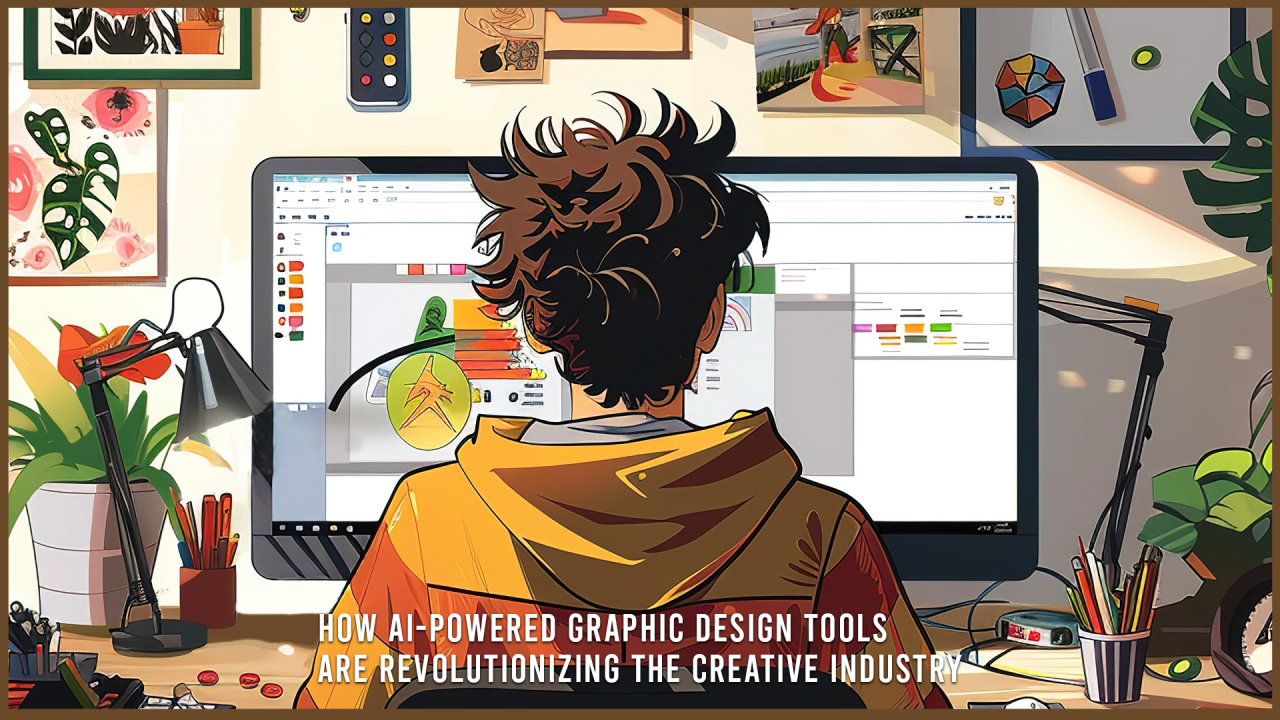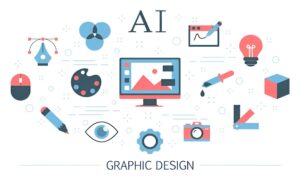AI-Powered Graphic Design Tools: Revolutionizing Creativity in the Digital Era
Graphic design has always been at the heart of brand storytelling. From product packaging to social media visuals, design shapes the way people perceive and connect with a brand. But in today’s fast-paced digital world, designers face increasing pressure to produce high-quality visuals at record speed — and that’s where AI-powered graphic design tools step in.
These tools are transforming the creative process by automating tedious tasks, generating stunning visuals, and making professional design accessible to everyone — even those with zero design experience. In this article, we’ll explore what AI-powered graphic design tools are, how they work, their benefits, and the top tools leading this creative revolution.
1. What Are AI-Powered Graphic Design Tools?
AI-powered graphic design tools use artificial intelligence, machine learning, and computer vision to help create, edit, and enhance visual content. Unlike traditional software that requires manual input for every design decision, AI tools can:
-
Generate designs from text prompts
-
Suggest layouts, colors, and typography
-
Remove backgrounds automatically
-
Enhance image quality with one click
-
Adapt designs for different platforms instantly
These tools aren’t replacing human creativity — they’re amplifying it.
2. Why AI in Graphic Design is Booming
Several factors have fueled the growth of AI design tools:
-
Demand for Rapid Content Creation – Social media marketing requires a constant stream of fresh visuals.
-
Global Shift to Digital – E-commerce, online advertising, and virtual events need consistent visual assets.
-
Technological Advancements – AI algorithms now produce realistic, detailed, and unique designs.
-
Democratization of Design – AI makes design accessible to non-designers, reducing dependency on expensive agencies.
3. How AI-Powered Graphic Design Tools Work
Most AI design tools rely on generative AI models and advanced algorithms:
-
Natural Language Processing (NLP): Understands user prompts and converts them into design instructions.
-
Generative Adversarial Networks (GANs): Creates new visuals by combining learned patterns from millions of images.
-
Computer Vision: Recognizes objects, colors, and composition rules.
-
Recommendation Engines: Suggests design elements that align with trends and best practices.
4. Benefits of AI-Powered Graphic Design Tools
a) Speed and Efficiency
AI can create in seconds what might take humans hours.
b) Accessibility
Non-designers can produce professional-looking visuals without mastering complex software.
c) Cost Savings
Small businesses save on hiring full-time designers for simple, repetitive tasks.
d) Creativity Boost
AI can suggest unique styles and variations that designers might not think of.
e) Consistency
Ensures brand guidelines are applied across all visual assets.
5. Popular Features in AI Graphic Design Tools
-
Text-to-Image Generation – Create visuals from written descriptions.
-
Background Removal – Instantly isolate objects.
-
AI Color Matching – Suggests colors based on brand palette or image mood.
-
Layout Automation – Auto-arranges elements for balanced composition.
-
Image Enhancement – Upscaling, sharpening, and noise removal.
-
Brand Kit Integration – Automatically applies logos, fonts, and colors.
6. Top AI-Powered Graphic Design Tools in 2025
1. Canva Magic Studio
-
Best For: Social media content, marketing assets.
-
AI Features: Magic Design (suggests layouts), AI background remover, and text-to-image generation.
-
Why It Stands Out: User-friendly and integrates brand kits.
2. Adobe Firefly
-
Best For: Professional creative workflows.
-
AI Features: Generative fill, text effects, AI object removal.
-
Why It Stands Out: Integrates seamlessly with Photoshop and Illustrator.
3. Fotor AI
-
Best For: Quick image edits.
-
AI Features: AI background removal, AI image enhancer, AI art generator.
4. Kittl
-
Best For: Typography-heavy designs.
-
AI Features: AI illustration generator, text-to-vector, auto-layout.
5. Designs.ai
-
Best For: All-in-one creative suite.
-
AI Features: Logo maker, video editor, speech-to-text, and graphic templates.
6. Looka
-
Best For: Branding and logos.
-
AI Features: AI-driven logo design, brand kit generation.
7. Visme
-
Best For: Presentations and infographics.
-
AI Features: AI content suggestions, template customization.
7. Real-World Applications of AI Graphic Design
1. Social Media Marketing
Brands use AI to create engaging Instagram posts, Facebook ads, and TikTok thumbnails in minutes.
2. E-Commerce
Online retailers use AI for automated product photo editing and ad creatives.
3. Branding
Startups use AI to design entire brand identities — logos, color palettes, typography — without hiring agencies.
4. Content Marketing
Bloggers and content creators use AI to generate header images, infographics, and visuals for articles.
8. The Human-AI Collaboration in Design
While AI speeds up production, human creativity is still essential:
-
AI handles repetitive, data-driven tasks.
-
Designers bring originality, storytelling, and emotional depth.
-
The most effective workflows combine both.
9. Challenges and Limitations
-
Originality Concerns – AI-generated art can be similar to existing works.
-
Ethics & Copyright – Legal gray areas regarding ownership of AI-created designs.
-
Over-Reliance on AI – Risk of losing the human touch.
-
Quality Control – AI sometimes produces errors in anatomy, proportion, or text rendering.
10. Best Practices for Using AI in Graphic Design
-
Always Customize – Use AI as a starting point, then refine manually.
-
Maintain Brand Consistency – Integrate your brand kit into AI tools.
-
Stay Ethical – Avoid using copyrighted material without permission.
-
Experiment – Test different AI tools to find the best fit.
-
Review Outputs Carefully – Human oversight ensures quality.
11. The Future of AI in Graphic Design
In the coming years, expect:
-
Real-Time Design Collaboration – AI co-designing alongside human teams in live sessions.
-
3D and AR Design Integration – AI generating immersive product mockups.
-
Personalized Design Experiences – AI tailoring visuals for individual customers in real time.
-
Voice-Driven Design – Creating designs through spoken commands.
By 2030, AI-powered design tools could handle 80% of repetitive graphic tasks, allowing designers to focus solely on creative innovation.
Conclusion
AI-powered graphic design tools are not here to replace designers but to empower them. From Canva’s instant templates to Adobe Firefly’s generative features, AI is making design faster, more affordable, and more accessible than ever.
For businesses, these tools mean lower costs, higher efficiency, and more creative output. For designers, they’re an opportunity to push boundaries and explore new creative horizons.
The brands that thrive will be those that embrace human-AI collaboration — where machines handle the heavy lifting and humans focus on storytelling, originality, and emotional impact.
https://bitsofall.com/https-www-yourwebsite-com-ai-marketing-trends-2025/
AI-Powered Personalization: Transforming Customer Experiences in the Digital Age





